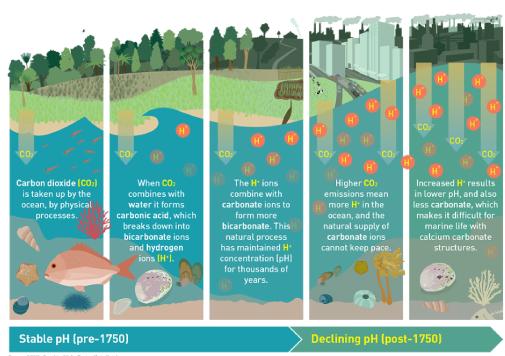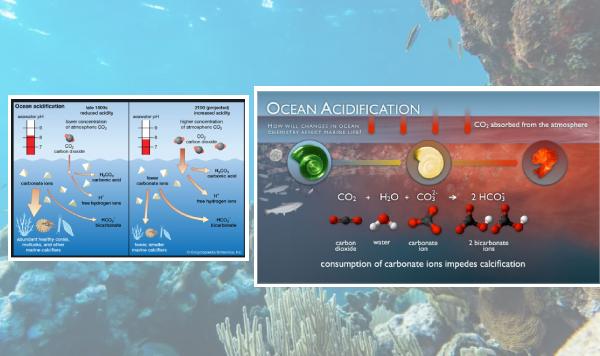Ocean Acidification: Long-Term Effects of Ocean Acidification
Unraveling the Crisis Beneath the Waves
Ocean acidification (OA) is often called the “invisible threat” to our marine ecosystems. It steadily changes the oceanic environment without immediate visual signposts. OA is a byproduct of rising atmospheric carbon dioxide (CO2) levels. It occurs when the ocean absorbs excess CO2, leading to a decrease in seawater pH. This phenomenon is significant globally. It directly affects marine biodiversity. It also impacts ecosystem functionality and human livelihoods that depend on the sea.
Chemical Shifts in the Ocean
The Science of Acidification: A Deep Dive into Seawater Chemistry
The chemistry behind ocean acidification is rooted in simple science. As CO2 levels rise, a portion of this gas dissolves in seawater. This leads to the formation of carbonic acid. This process lowers the pH of the seawater and disrupts the delicate balance of marine ecosystems. This shift impacts the physiological processes of marine organisms. It also alters essential biochemical cycles. This change affects everything from nutrient availability to species interactions.
Devastation of Coral Reefs
Coral Reefs on the Brink: The Direct Impact of Acidification
Coral reefs are among the most affected ecosystems by ocean acidification. These vibrant structures are primarily composed of calcium carbonate, which can dissolve when pH levels drop. The weakening of coral skeleton structures compromises reef integrity. It also reduces resilience, resulting in diminished habitats for countless marine species. This degradation leads to a cascading effect on biodiversity—wherein species that depend on these crucial structures face severe population declines, further destabilizing the ecosystem.
Impact on Marine Species and Ecosystems
Vulnerable Marine Life: Species at Risk from Rising Acidity
Ocean acidification poses serious risks to various marine species. This is especially true for shellfish and crustaceans that rely on calcium carbonate for their shells. Research indicates that OA can affect fish behavior and reproductive success, leading to potential declines in fish populations. As keystone species falter and food webs unravel, the implications of these changes extend beyond individual species and threaten the entire marine food web.
Economic and Social Consequences
The Human Cost: Economic Fallout from Ocean Acidification

The economic ramifications of ocean acidification are profound. Fisheries face dire consequences as declines in fish stocks threaten food security and livelihoods, particularly for coastal communities reliant on fishing industries. The broader economic impact extends to tourism, recreation, and ecosystem services, emphasizing the urgent need for awareness and action to mitigate OA effects.
Regional Hotspots and Global Implications
The Pacific in Peril: Causes and Regional Impact of Acidification
The Pacific Ocean is a critical zone for studying ocean acidification. Its diverse ecosystems contribute significantly. The region also relies largely on marine resources. Areas such as the Coral Triangle and the California Current are particularly vulnerable. These areas serve as indicators of broader trends in ocean health. The implications of OA are not confined to regional hotspots; they resonate globally, indicating a pressing need for international cooperation and policy interventions.
Pathways to Mitigation
Charting a Course for Recovery: Solutions to Combat Acidification
Combating ocean acidification demands innovative and comprehensive strategies aimed at reducing carbon emissions and enhancing ocean resilience. These solutions include transitioning to renewable energy sources, implementing carbon capture technologies, and promoting sustainable fisheries management. Moreover, international cooperation and public awareness campaigns play critical roles in fostering a collective response to this environmental crisis.









Leave a Reply